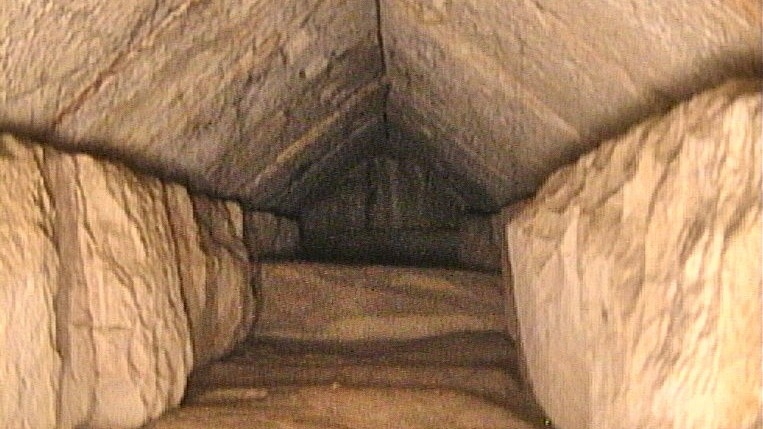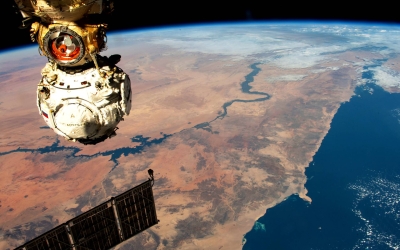Hidden tunnel discovered inside Egypt's Great Pyramid at Giza

A nine-metre-long hidden passageway has been discovered inside Egypt’s Great Pyramid at Giza.
The corridor, which is two metres wide and located on the northern side of one of the world’s largest pyramids, was unveiled during a press conference on Thursday by Egyptian antiquities officials.
The findings were made as part of the Scan Pyramids project, which uses infrared thermography, 3D construction technology, and radiographic muons, among other non-destructive and non-invasive techniques, to investigate the site.
The project was launched in 2015 as a collaboration between Egyptian experts and universities in Canada, France, Germany, and Japan.
The Great Pyramid was built as a monumental tomb around 2560 BCE during the reign of Pharaoh Khufu. It has three known chambers and is the largest of the three main pyramids that make up the Giza pyramids complex.
“There is a great possibility… the tunnel is protecting something. In my opinion, it is protecting the actual burial chamber of King Khufu,” Zahi Hawass, Egypt’s former antiquities minister who is supervising the project, told reporters at the unveiling on Thursday.
The 139-metre-high pyramid was the tallest structure made by humans for nearly four millennia until the Eiffel Tower was completed in 1889.
It is the oldest of the seven wonders of the ancient world, and the only one that has survived to the present day.
The function of the newly discovered corridor is not fully known, but officials believe it could lead to further discoveries about how the ancient wonder was constructed.
“A big question mark hangs over whether this corridor was created to relieve the weight on the [main] entrance or lighten the load on a space yet to be discovered,” said Mostafa Waziri, head of Egypt’s Supreme Council of Antiquities.
"Scanning work will continue to uncover more secrets of this structure.”
In 2017, Scan Pyramids announced that it had discovered a 30-metre-long void inside the Great Pyramid. It was the first major internal structure to be found since the 19th century.
Middle East Eye delivers independent and unrivalled coverage and analysis of the Middle East, North Africa and beyond. To learn more about republishing this content and the associated fees, please fill out this form. More about MEE can be found here.





